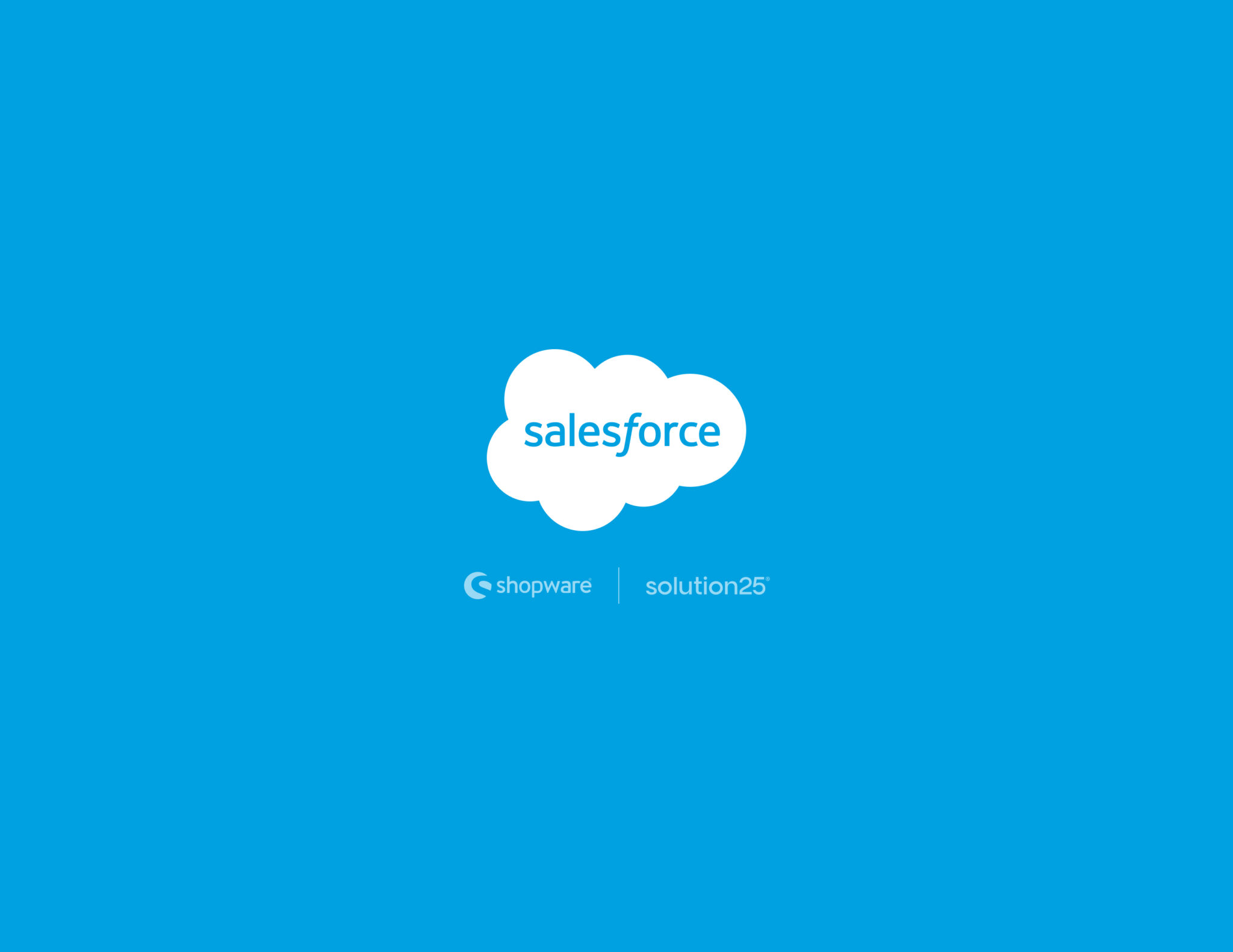Shopware Platinum Partner
Extension Premium Partner
200+ Projects
75+ Experts
Shopware Platinum Partner
Extension Premium Partner
200+ Projects
75+ Experts

Salesforce is a cloud-based platform designed to manage customer relationships, offering tools for sales, customer service, marketing, and more. Founded in 1999, it pioneered the Software as a Service (SaaS) model, allowing users to access its features via a web browser without installing software. With over 150,000 customers worldwide, from startups to Fortune 500 companies, Salesforce is the world’s leading CRM platform
Salesforce centralizes customer data, providing a 360-degree view that helps teams collaborate and make informed decisions. Its various “clouds” cater to specific needs, such as Sales Cloud for managing leads or Service Cloud for handling customer support. The platform’s flexibility and scalability make it suitable for businesses across industries, including real estate, healthcare, and education.
Salesforce is ideal for businesses aiming to enhance customer interactions, streamline operations, and leverage data. Small businesses can use the Starter Suite for simplicity, while enterprises benefit from advanced features in editions like Unlimited. It’s particularly valuable for sales, marketing, and customer service teams needing integrated tools to boost efficiency.
Salesforce offers centralized data access, automation of repetitive tasks, improved team collaboration, and robust analytics. For example, companies like Jaipur Rugs have streamlined sales and service processes using Salesforce, enhancing efficiency. Its AppExchange marketplace provides thousands of integrations, making it adaptable to diverse business needs.
Imagine running a business where all your customer information is scattered across spreadsheets, emails, and sticky notes. Sounds chaotic, right? That’s where Salesforce comes in. Launched in 1999 by Marc Benioff and his team, Salesforce revolutionized the tech world by introducing a cloud-based Customer Relationship Management (CRM) platform. Unlike traditional software that required hefty server setups, Salesforce operates entirely online, accessible through a web browser. Today, it serves over 150,000 businesses worldwide, from small startups to giants like Amazon and Toyota, helping them manage customer relationships with ease.
Salesforce’s core strength lies in its ability to unify customer data, streamline processes, and empower teams to deliver personalized experiences. Whether you’re tracking sales leads, resolving customer issues, or launching marketing campaigns, Salesforce provides tools to make it happen efficiently. Its evolution from a simp
Before diving into Salesforce’s specifics, let’s clarify what CRM is. Customer Relationship Management is both a strategy and a technology for managing interactions with current and potential customers. It’s about understanding your customers’ needs, tracking their interactions with your business, and using that data to build stronger relationships. Why does this matter? Because businesses that prioritize customer relationships often see higher retention rates and increased sales.
CRM systems like Salesforce centralize customer data, making it accessible to sales, marketing, and service teams. This unified view eliminates silos, reduces manual work, and helps teams respond faster to customer needs. For example, a sales rep can see a customer’s purchase history, while a support agent can view their recent complaints, all in one place.
Salesforce offers a suite of products, or “clouds,” each tailored to specific business functions. Here’s a quick overview:
Choosing the right cloud depends on your business needs. Small businesses might start with the Starter Suite, which combines sales, service, and marketing features, while larger enterprises may opt for specialized clouds.
Implementing Salesforce is like planning a big trip you need a clear destination and a solid map. Proper preparation ensures the platform aligns with your business goals. Here are the key steps, based on best practices from Salesforce experts:
Identify who will be involved in the implementation. This includes:
Engaging diverse stakeholders ensures the system meets varied needs, from sales reps to executives.
Discuss with stakeholders to define what you want Salesforce to achieve. Are you aiming to increase sales efficiency, improve customer service response times, or enhance marketing ROI? For example, a goal might be to reduce the sales cycle by 20 % through better lead tracking. Address pain points, like manual data entry or lack of real-time insights, to set realistic objectives.
Collect detailed requirements from all departments. Sales teams might need custom fields for tracking deal stages, while marketing teams may want campaign analytics. Document daily tasks and workflows to identify areas for optimization. This step ensures Salesforce is tailored to your business processes.
Not all features are equally urgent. Categorize requirements as must-have (e.g., lead management), should-have (e.g., advanced reporting), or nice-to-have (e.g., custom dashboards). Group them into epics broad categories like “sales automation” and estimate effort with your team or a Salesforce consultant.
Once you’ve laid the groundwork, it’s time to bring Salesforce to life. The following steps, adapted from Salesforce’s official implementation guide, focus on setting up the platform for small and medium-sized businesses.
Start by creating user accounts to ensure everyone who needs access has it. Here’s how:
Customize Salesforce to match your business terminology and processes:
Bringing existing data into Salesforce is critical for a seamless transition:
Salesforce’s reporting tools help you track performance:
Prepare your team for the transition:
Once implemented, Salesforce becomes a daily tool for various teams. Here’s how different roles use it:
Sales reps use Sales Cloud to:
Service Cloud empowers support teams to:
Marketing Cloud helps marketers:
Salesforce is more than just software it’s a game-changer for businesses looking to build stronger customer relationships and streamline operations. By following the steps outlined defining goals, setting up users, importing data, and training teams you can integrate Salesforce effectively. The platform’s flexibility, from its various clouds to its AI capabilities, makes it a powerful tool for businesses of all sizes. Start exploring Salesforce today, and you’ll soon wonder how you managed without it.